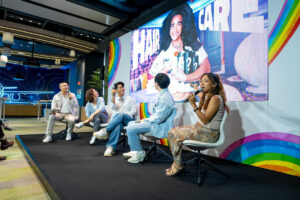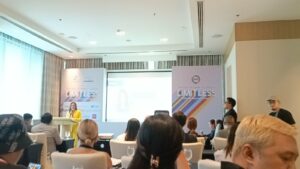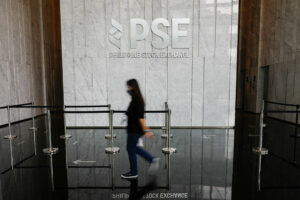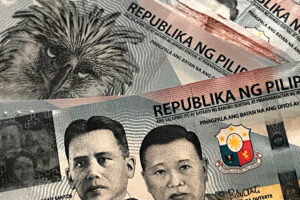CONTENT creators, thanks to the amount of influence they have over their fans, make great diverse representation. But beyond the clout and the endorsements, four Filipino YouTubers are now at the forefront of providing safe spaces for their respective lesbian, gay, bisexual, trans, queer, intersex, asexual plus (LGBTQIA+) communities.
Roanne Carreon is one of these ambassadors, as one-half of the YouTube power couple Roanne and Tina and co-founder of Queer Safe Spaces. Being chosen to share her and her partner’s journey of self-discovery has been an honor, she said at the annual Google Pride Conversations on June 4 at the Google Headquarters in Bonifacio Global City, Taguig.
For her, coming out was a gradual process that happens every day.
“My mental health was affected, especially when I couldn’t say anything about my sexuality, and I just wanted to disappear. After that, when my family found out about my girlfriend Tina [Boado], I took the opportunity to come out. I told them that I’m bisexual,” she said.
She added that while they share their lifestyle as a couple on YouTube, “we always show both the good side and the ugly side,” and encourages everyone to normalize the differences between each queer person or couple.
Their Facebook support group of over 17,000 members, Queer Safe Spaces, was recently formalized into a non-profit organization. Some of their initiatives include partnering with mental health organizations and helping train establishments to be LGBTQIA+ safe spaces.
Nonbinary model and content creator Joshua Cruz said at the forum that, as YouTubers, being role models for their viewers is an important role.
“There’s no pressure on you to come out when you’re still looking for what resonates with you. Maybe other queer content creators [help you realize] ‘oh I’m like him,’ but it doesn’t mean that you want to come out. If you’re not sure of your identity, you can just say to yourself, ‘okay, so I’m like him’,” he said.
In agreement with Mr. Cruz at the panel was Jan Angelo Ong, a gay skincare content creator and beauty expert who emphasized how online communities “can encourage young viewers to dream.” He said at the forum that his journey all started when he joined an existing online skincare community and watched someone else’s videos in the bathroom 10 years ago.
“I would indulge on skincare bought from saving my monthly allowance and I’d pretend that I’m vlogging. This all would not be possible had I not been part of a community that allowed me to dream. Me being a content creator now also allows for other people like me to dream,” Mr. Ong explained.
The key to a good YouTube community is vulnerability, said Yani Villarosa, a bisexual content creator and podcaster at Gabi ng Bading.
“As a queer woman, I can be confused. I can be messy. This is my experience. And when viewers find stories they resonate with, they feel it’s okay or normal to go through it. They find they’re not alone in their struggles,” she said.
Echoing Ms. Carreon’s statement on coming out as “a gradual process,” the panel concluded with a message of hope. “It’s not like you come out and suddenly have it all figured out. You’re still building that equation for your truth, your authenticity,” said Ms. Villarosa.
To watch YouTube videos that offer moral support, access to communities, and representation from LGBTQIA+ peers, check out this year’s four Google Pride leaders: @roanneandtina, @JoshuaCruzzz, @Ongiel, and @yanihatesuwu. — Brontë H. Lacsamana





